Chicken and Sausage Gumbo
Chicken and Sausage Gumbo is the ultimate Louisiana comfort food! This Cajun gumbo is filled with chicken and sausage and cooks low and slow all day. Learn how to make gumbo for a crowd and serve it over rice!
Love Louisiana recipes like this one? Don’t miss Crawfish Etouffee, Shrimp and Grits and Chicken and Sausage Jambalaya!

My food blog friends know me as a Lousiana food snob. (That’s putting it nicely.) And I’ll be honest: I am.
So today, I’m sharing a dissertation on gumbo making. I’d say I’m sorry, but I’m really not…
Before we dive in and talk about how to make gumbo, you need to know there are lots of different types of gumbos.
Gumbo is a word that’s found in several West African dialects meaning okra. I’ve also read that there’s a word in Native Choctaw similar to gumbo that means filé, which are the dried, ground sassafras leaves used as garnish.
It’s believed that gumbo was brought to our country by enslaved people, and today, different regions of the country have their own gumbos. Which is why you’ll see an okra and tomato-filled Gullah Geechee gumbo and a seafood and tomato Creole one. (This article from the New York Times details lots of different ways gumbo is being made!)
The gumbo we’re discussing today is a Cajun gumbo, which gets its flavor from dark roux and highlights both sausage and chicken along with the “trinity” of vegetables: onion, green bell pepper and celery.
If you want to learn more about the history of gumbo, the different styles and types and other frequently asked questions, check out Gumbo 101.
Why I love this recipe:
My husband’s parents hosted a New Year’s Day party for years, and they would make a gumbo for their guests. They’d also offer black eyed peas, greens, cornbread and other New Year’s Day fare.
When we moved to Dallas, we decided to continue the tradition here because we love a good party and gumbo is fabulous for feeding a crowd.
And as a food blogger, I feel compelled to share how to make this classic recipe because it’s really, really delicious.
I’m gonna share my tips and tricks for how to make a roux for gumbo, as well as how to put together this Cajun comfort food classic.
Other Louisiana recipes you should check out right this second: Ground Beef Meat Pies | Shrimp and Grits | Turkey Sausage Jambalaya | Seafood Gumbo
Looking for more comforting dishes? Head on over to my Dinner Recipe Index for more ideas.
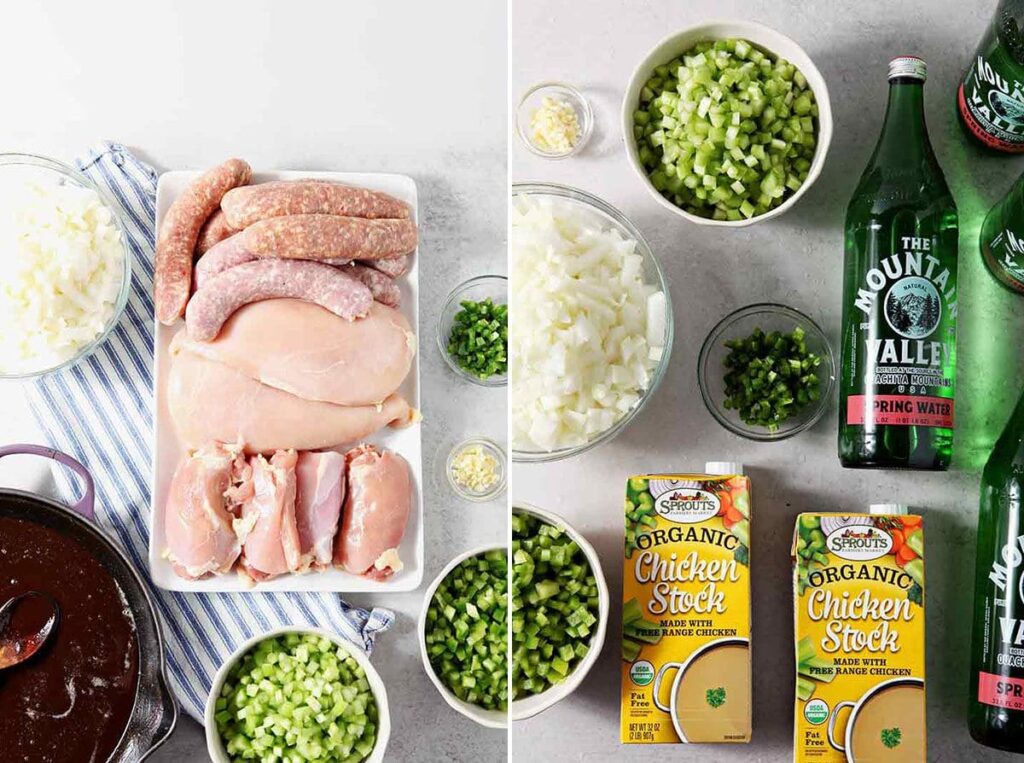
What do I need to make a proper gumbo?
The Speckled Palate participates in affiliate programs. As an Amazon Associate, I earn a commission from qualifying purchases. Please refer to my disclosure page for more information about these affiliate programs.
- A large stockpot
- Sharp knife and cutting board
- Skillet (nonstick or cast iron is brilliant)
- Liquid measuring cup
- Wooden spoon
- Rice cooker (or a saucepan with a lid)
In addition to these tools, you’re going to need some ingredients for your gumbo, too.
- Dark roux (if you don’t plan on making your own) or roux ingredients—which include equal parts unflavored oil and all-purpose flour
- The Trinity—this is the base of most Cajun and Creole recipes. It includes green bell pepper, onions (yellow or white) and celery.
- Garlic and jalapeno—this adds a little extra flavor! If you don’t want to add the hot pepper, feel free to leave it out. Your gumbo will still be delicious.
- Chicken thighs and chicken breasts—if you have a favorite, you can use one or the other. We’ve made gumbos with just chicken breasts and ones with just the thighs, and they’re both delicious. You can use meat that’s on the bone or off the bone. Do whatever works best for you!
- Sausage—this recipe calls for a combination of sweet Italian pork sausage and Andouille sausage. We prefer fresh sausage for this recipe, but if you can’t find that, smoked Andouille works, too. We normally purchase pork sausage, but you can find chicken sausage for this gumbo recipe, too.
- Water
- Chicken stock or chicken broth
- Seasonings—Salt-Free Tony Chachere’s Creole Seasoning, salt and pepper. We like the Tony’s salt-free seasoning because most Creole and Cajun seasonings are super salty. (Fun fact: They have similar flavor profiles, so you can use Cajun seasoning in place of the Creole seasoning if you don’t have any. Or you can make your own.)
- White rice or brown rice, for serving
- Garnishes—green onions, fresh parsley and gumbo file, which are ground up sassafras leaves. It’s sometimes called file powder. Sprinkle these on top of your bowl of gumbo for extra flavor.
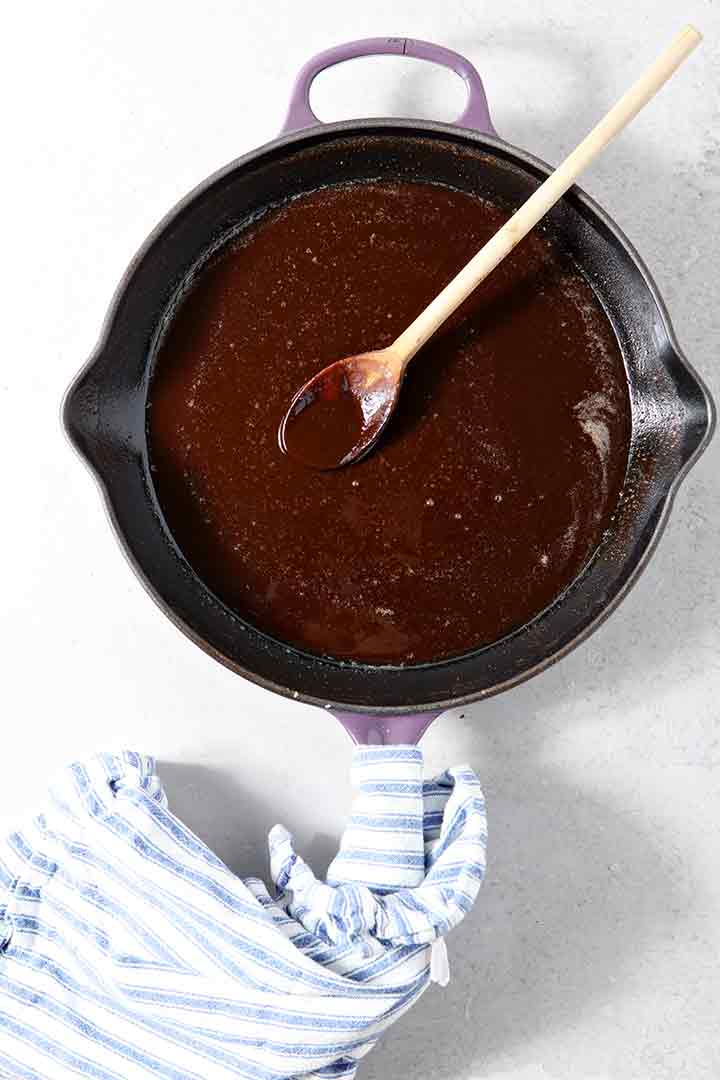
How to make dark roux
I cover this more thoroughly in my How to Make a Gumbo Roux post, but here is the overview:
Over medium heat, warm the fat, and then add the flour. It will have a golden, light color.
Stir, stir, stir, stir, and let the mixture deepen to a dark brown color. The flour actually cooks and emanates a wonderful scent as it darkens.
For a Cajun gumbo, your roux needs to be dark brown without being burnt. Mine took about 30-40 minutes over medium heat, and I stirred it the entire time so it wouldn’t burn.
If you’re nervous about making a homemade roux, start slow and don’t turn up the heat too high. Trust your nose, and constantly stir.
When it gets to be a deep chocolate brown, you’re done! Remove it from the heat, and let it cool slightly before adding it to the water as the base for your gumbo.
Some say the roux will end up the texture of peanut butter, though I’ve always found homemade roux to be a little thinner than that. Store-bought roux tends to be thicker.

How do you make Chicken and Sausage Gumbo?
Once your roux has been made, chop the vegetables, and bring the water to a boil. Add the roux to the water and turn down the heat, stirring occasionally until the roux dissolves into the mixture.
Sauté half of the onion, celery and bell pepper in a skillet with oil. I like to use the one where I made the roux to cut down on dirty dishes. Cook until soft, then add to the gumbo.
Season the chicken breasts and thighs, and add the chicken to the same skillet as you did the veggies. Sear them.
When browned (but not necessarily cooked through), add the whole pieces of chicken to the gumbo. We’ll shred ’em in a bit, so don’t chop them up.
Next, add the sausage to the pan and cook, covered, with water, until the sausage has firmed up. (Again: They don’t need to be cooked through.) Slice, then drop into the gumbo.
Sauté the garlic and the jalapeno in the leftover juices from the meats, then add the rest of the onion, celery and bell pepper to the pan. Cook until soft, then deglaze the skillet with ½ cup of the chicken stock. Use a wooden spoon to scrape the browned bits from the bottom of the pan before adding these to the gumbo. Those browned bits are flavor.

Add the rest of the chicken stock to the gumbo, raise the heat to medium, and bring to a bubble. We don’t want it to be a rolling boil, but we want it to have movement to cook the meats.
Simmer for 2-3 hours, or however long you feel led. (We like to think the longer the gumbo cooks, the better it is.)
Once the gumbo has finished cooking, shred the chicken using tongs and/or forks, and return the meat to the pot.
Serve with rice, green onions and gumbo file, or cover and store until the next day, when you will serve it! If you like it spicy, consider adding a bit of hot sauce or cayenne pepper to your bowl of gumbo.
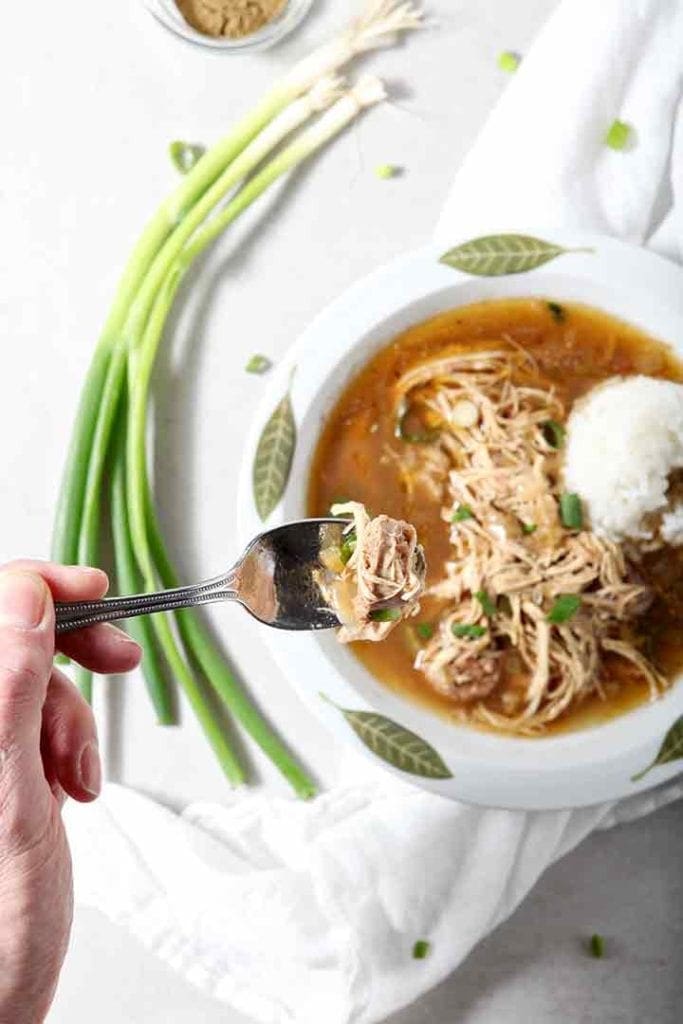
Erin’s Easy Entertaining Tips
We’ve been making a batch of this ‘ol gumbo for years for our New Year’s Day party, and I have a few tips and tricks to making the hosting and entertaining easier on yourself…
- Make your gumbo a day in advance. Gumbo takes some time to set up and get going, but it takes time for the flavors to meld together. Give yourself the time to put it together the day before your party, and store it in the fridge the night before. Skim any excess fat from the gumbo before reheating it the morning of your party.
- Have the fixings to serve it with! Rice is a must, and so is gumbo file! Some folks enjoy potato salad with gumbo, while others add hardboiled eggs. The key is you do you.
- Double the recipe for a crowd or half it for a smaller gathering. Simple math is our friend here. Just know that when halving this recipe, we always err on the side of more protein and round up to the nearest pound if necessary.
The key to any gathering that involves food is everyone having fun. That includes you, too, so don’t let this stress you out!

Frequently Asked Questions
What’s the difference between Creole and Cajun?
In terms of food, Creole cuisine pulls influence from Spain, Africa, Germany, Italy, Portugal and the West Indies.
Cajun cooking is more of a one-pot, home cooking made with whatever ingredients the cook has on hand. (I really like how Houma Travel talks about the differences in the cooking and comparing the two to country vs. city cooking, though Cajun cooking can certainly be elevated. Please don’t think it’s all simple food because there is some that can certainly be “fancier.”
Both have similarities, of course, and oftentimes are thought of as one and the same. They are not, however, the same.
For example, Creole dishes call for tomatoes and okra while Cajun dishes do not.
But Creole and Cajun are more than just food.
In fact, the term Creole goes back to the Caribbean, but for this explanation, we’re just going to talk about Louisiana because there is a lot of information out there. (If you want to learn more, I highly suggest reading about this article by Helen Bush Caver and Mary T. Williams.)
In Louisiana, the word creole was first used to describe someone who was born in the colony (as opposed to anyone born elsewhere.) It was originally used to distinguish the children of colonists and not anyone else—to set them apart in a separate class.
However, over time, this label has been applied to the people who are descended from the enslaved African American, as well as the Native Americans, who were born in Louisiana.
Broadly speaking, Louisiana Creole people are the descendants of those who inhabited colonial Louisiana during both French and Spanish rules. Many spoke and speak French, Spanish and Louisiana Creole.
Cajuns are an ethnic group that lives in Southwest Louisiana. They are also known as Acadians. The Acadians were expelled from what are now the Canadian Maritime provinces during the 1700s during the Great Expulsion. Since they came to Louisiana and settled in the Acadiana region (west of the Mississippi River), the Cajuns are known for their dialect of French, as well as their music, culture and cuisine.
If you don’t want to take 30-45 minutes to make a homemade roux and/or are terrified that you’re going to burn it (I totally understand your fear! My first dark roux took THREE HOURS, and I was almost 7 months pregnant at that point, haha), you can purchase pre-made dark roux* (affiliate link) from several grocery stores or an online grocery retailer.
I advise making your gumbo the day before you plan to eat it. While it’s super tasty straight out of the pot after it finishes cooking, we’ve found that storing it overnight and eating it the next day leads to a more complex gumbo. (This also helps if you’re hosting a party or inviting people over—you won’t have to be sweating in the kitchen as your guests arrive!)
Sure! We like using a combination of chicken breasts and chicken thighs, but if you prefer one over the other, feel free to use that.
If you struggle finding fresh Andouille sausage, we’ve found that half sweet Italian sausage and half spicy Italian sausage works in a pinch, too. We’ve also used chicken Andouille sausage and that’s provided a ton of flavor, though pork Andouille sausage is the traditional sausage to use in this kind of gumbo.
I have had good luck finding fresh Andouille at the meat counter of my local grocery store or at specialty shops that make their own sausage.
If you’re looking for a faster gumbo recipe, check out my Instant Pot Gumbo! It makes a smaller batch, too.
Math!
This batch of gumbo served 40-50 people at our annual New Year’s Day party, and we had about 4-5 servings leftover when all was said and done.
Winston and I advise looking at the meat. How much meat will you and your family eat in one sitting? How much will you want for leftovers? Generally, I allot about ¼ lb. of meat for each family member for a meal.
So if your family of four wants to have gumbo two nights this week, TWO pounds of meat is what you’re looking for. Then take the rest of the ingredients and calculate how much you need based on that.

Quick tips and tricks for the best gumbo
- Give your chicken and sausage gumbo time! Every part of this recipe takes some time, so don’t rush it and make it on a day when you won’t be hurrying through it.
- Gumbo shortcut alert!: Use a store-bought roux* (affiliate link). Winston’s grandmother swears by this, and it’s an excellent timesaver. I’ve also been told that you can make a large batch of dark roux and store it in the fridge for a long time to use whenever you like!
- Freeze leftovers in a freezer-safe container for up to 3-4 months. This recipe also keeps in the fridge for 3-4 days, too. Just be sure to store it separately from the rice. To reheat the gumbo, simply heat in the microwave in 30-second bursts until it reaches your desired temperature.
Now who’s ready for some GUMBO?

Large Batch Chicken and Sausage Gumbo
Ingredients
Gumbo Roux
- 2 cups oil
- 2 cups all-purpose flour
Gumbo
- 2 green bell peppers diced (about 2 cups when diced)
- 5 yellow onions small-medium, diced (about 6 cups when diced)
- 1 jalapeno pepper diced
- 8 celery stalks diced (about 2 cups when diced)
- 2 garlic cloves minced
- 1.5 lbs. chicken thighs boneless and skinless
- 2 lbs. chicken breasts boneless and skinless
- 1.5 lbs. Andouille pork sausage
- 1.25 lbs. sweet Italian pork sausages
- 1 gallon gallon water (16 cups)
- 64 oz. chicken stock (8 cups)
- Dark Roux recipe above
- Tony Chachere’s Salt-Free Creole Seasoning to taste
- Green onions diced, for garnish
- Parsley diced, for garnish
Equipment
- Jarred roux
- Tony Chachere’s No Salt Seasoning Blend
- Gumbo file
As an Amazon Associate and member of other affiliate programs, I earn from qualifying purchases.
Instructions
Make the Roux
- Heat a skillet over medium heat.
- Add oil. When warm, add flour.
- Brown the mixture over medium heat until dark brown, constantly stirring to ensure the flour mixture does not burn. It will smell nutty. (This will take between 30-45 minutes total.)
- Remove from the heat, and let cool slightly.
Make the Gumbo
- If making your own instead of using a jarred mix, make the roux. (This took 30-45 minutes.)
- Dice green bell peppers, yellow onions, jalapeno pepper, celery stalks and garlic. (This took me upwards of 45 minutes.)
- Bring water to a boil. Add the roux, and simmer, stirring occasionally until the roux has dissolved into the mixture.
- Sauté half of the onion, celery and bell pepper in the same pan you made the roux, adding 1-2 tablespoons of oil to coat the veggies. Cook until soft.
- Add to the simmering gumbo pot.
- Season the chicken with Salt-Free Tony Chachere’s Creole Seasoning.
- Pour a tablespoon of oil into the same pan you used for the veggies and the roux. Sear the chicken breasts. When browned (but not necessarily cooked through), drop into the simmering gumbo water.
- Sear the chicken thighs in the remaining oil until browned. Add to the gumbo water.
- Add the sausage to the pan. Add 2 tablespoons of water, and cover with a lid to steam. Cook until the outsides have firmed up. (Again: They don’t need to be completely cooked through.) Slice, then drop into the gumbo.
- Please note: The meat does not need to be cooked through. It will cook as the gumbo cooks. Also, the chicken does not need to be chopped. Once it has cooked completely, we will pull it from the pan with tongs and shred, then add it back in.
- Sauté the garlic and the jalapeno in the juices left over from the meats.
- Add the rest of the onion, celery and bell pepper to the pan. Cook until soft, then deglaze with about ½ cup of the chicken stock. Use a wooden spoon to scrape the browned bits from the bottom of the pan before adding these to the gumbo pot.
- Add the rest of the chicken stock to the gumbo pot.
- Raise the heat to medium, and cover partially. Bring to a bubble. (You don’t want it to be a rolling boil, but you’ll want the gumbo to have some movement to start cooking the meats.) This should take anywhere from 15-25 minutes.
- Simmer for 2-3 hours, or however long you feel led. (We like to think the longer the gumbo cooks, the better it is.)
- Once the gumbo has finished cooking, shred the chicken using tongs and/or forks, and return the meat to the pot.
- Serve immediately with rice, green onions and gumbo file, or cover and store until the next day, when you will serve it!
Video
Notes
Nutrition

About the Author:
Erin Parker is a Southern gal living in Texas with her husband and two daughters. She started The Speckled Palate to share what she was cooking as a newlywed… and over the years, it’s evolved to capture her love for hosting. Specifically, the EASIEST, lowest key entertaining because everyone deserves to see their people and connect over good food. Learn more about her…



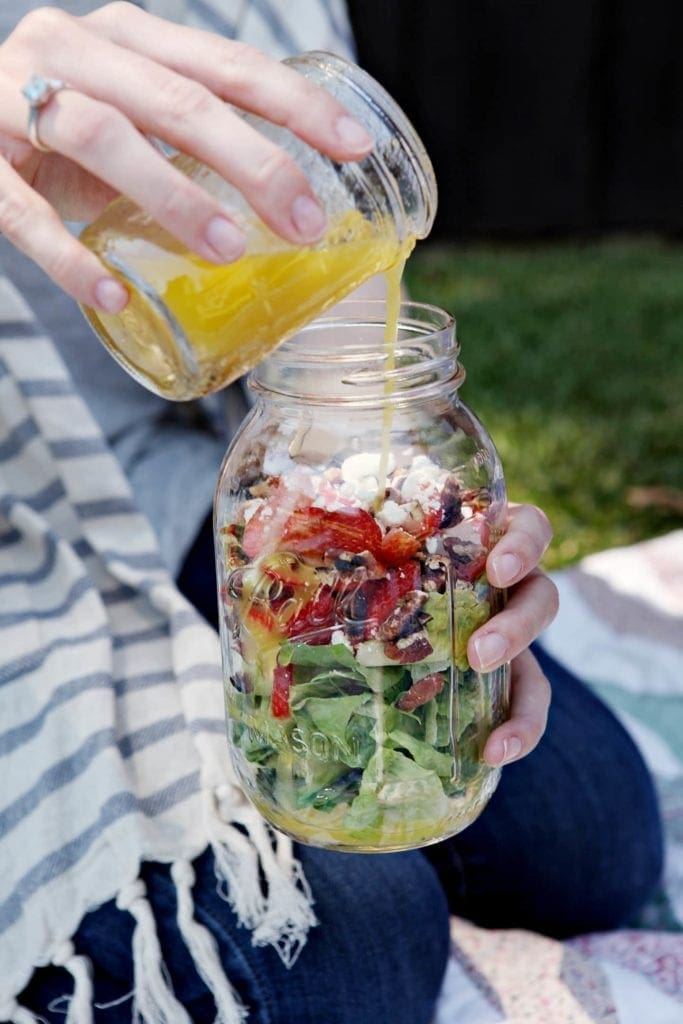

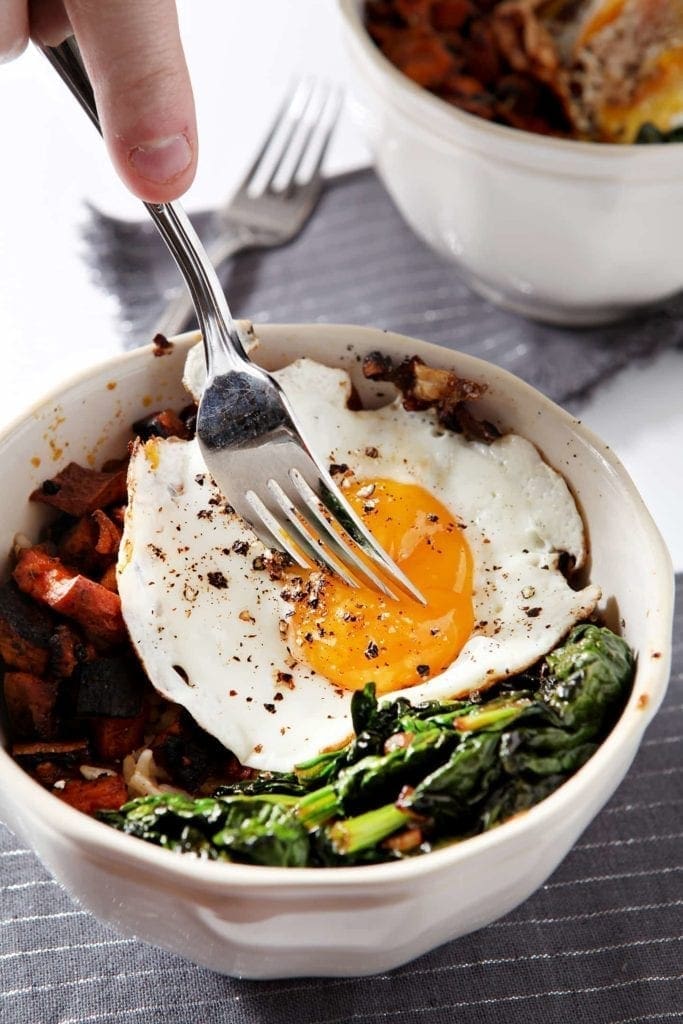
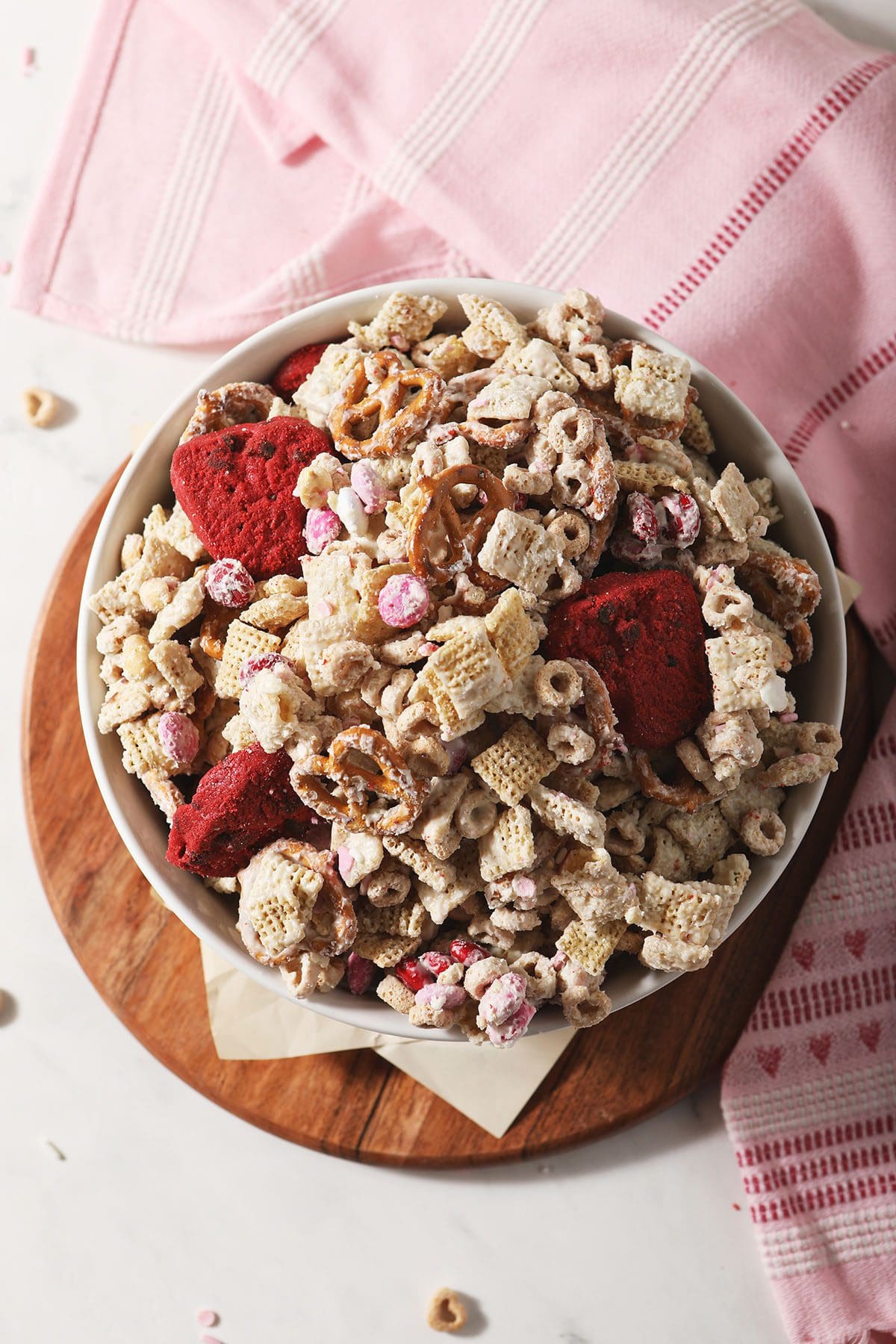
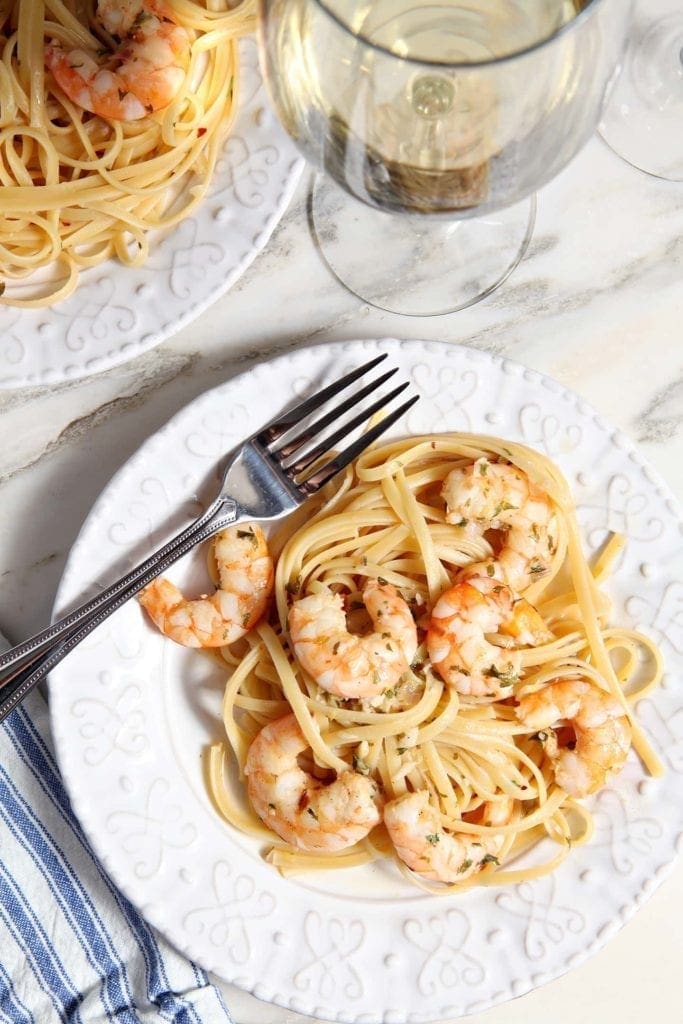
My Mother was a Boudreaux and we lived in Lafayette La. for many years. This is pretty much a real Cajun recipe, But we knew nothing of Jalapeno pepper, only cayenne, and we never took the chicken off the bone. This sounds wonderful!
Perry, this makes me so incredibly happy to hear! My husband, too, is from Lafayette, and this is his grandmother’s recipe (with a few additions from us, like that jalapeno), and we love it so much. I love hearing how similar y’all’s gumbo is to this one, and I hope you enjoyed this if you gave it a try!
Erin, I’d rate this recipe a hundred stars if I could – It’s THAT good! The smells alone warmed my heart, but eating it was even better.
I halved the recipe and made my roux with butter and it turned out AMAZING!! We have plenty of leftovers for the week, which we just can’t wait to eat more and more of it. Thank you so much for all the tips and details you shared in this post. It all made it so easy for me to make an amazing dinner.
Love, love, love!!
Hi Erin! Interesting recipe. Not exactly authentic, but still looks good. And anything to increase the appeal of Cajun food and dispel the myth that Cajun means “spicy)…
However, as a Louisiana born and bred executive chef with 30+ years experience specializing in Cajun and Creole cuisine, I want to clue you and your readers into a MUCH simpler way to make your dark roux…
As anyone who’s tried to make a dark brown roux on the stove knows, the slightest distraction, for even a moment (and let’s face it, life IS distraction), can and will lead to those telltale black flecks that mean the roux is ruined and you have to start all over again. I’ve seen people try to make the roux 5 or 6 times in a row and burn it every time because they got distracted, they were stirring but not fast enough, the flame/heat was a shade too high, etc. It’s enough to drive you nuts and cause you to give up. And that’s a shame because roux is the key to most Cajun and Creole cuisine. Gumbo, Etouffee, Jambalaya, Sauce Piquante, etc.
There simply has to be a better way!!! And I learned that better way working at K-Paul’s Louisiana Kitchen in New Orleans during my internship in culinary school at Johnson & Wales. After I graduated, I went back to K-Paul’s and worked there for another two years.
Anyway, here is the better way…
Make your roux in a well-seasoned cast iron vessel with a lid, such as a Dutch Oven or Camp Stove. I’ve always preferred Lodge for castiron, but I recently purchased a FINEX cast iron Dutch Oven that was hand made in Oregon and is octagonal in shape, and it’s utterly fantastic!
Anyway….
* The first thing is to spread your flour in a single layer on a piece of parchment paper lining a sheet pan and toast the flour in the oven at 325° for 10 minutes in a regular oven (whatever you do, do not try this in a convection oven or you’ll be cleaning up burnt flour for days). Then remove the flour and let it cool.
* Next, heat the vegetable oil in the cast iron vessel until it’s just starting to shimmer.
* Add the toasted flour to the oil, about 1/3 at a time, whisking thoroughly until it’s all incorporated. Rather than a paste, you’re looking for something that has the consistency of wallpaper paste (kinda loose, but fully combined so that when you drag a spin through it, the path of the spon doesn’t fill back in right away.
* When the flour is fully incorporated, you’ll see that you’re already ahead of the game with a brown roux.
* Then place the cover on the vessel and place the vessel in a 350° oven.
* Set a timer for 60 minutes, but take it out and thoroughly stir the roux at the 30 minute mark and put it back in the oven having turned the vessel around (this accounts for oven hot spots, even though the cast iron is already helping with that).
* At the 60 minute mark, check the roux. It should be absolutely perfect without a black fleck in sight.
* If you want the roux to be still darker, then return to the oven for 10 minute increments, up to a total coming time of 90 minutes. I would not go beyond 90 minutes though considering that the roux is basically Cajun napalm at this point and it could start burning the seasoning off of the vessel, which will obviously result in burnt black flecks galore!
* And you’re done – with a PERFECT dark brown – black roux on your hands. And you’ve also had 60-90 minutes to prepare the rest of your ingredients (or, if they were already prepared, you could spend the time relaxing with a good book).
So, you see, the method is fool proof as long as you stop it when you’ce achieved the dark-peanut-butter/brick-colored roux you were going for.
You’ll also notice that the roux has a MUCH deeper and nuttier flavor because of the toasting of the flour.
I hope this helps!
Chef Russ
Sorry about the typos! It’s very late and I am extremely tired. I assumed there would be a way to edit my mistakes. But in truth I should have written it in Word and then cut/pasted it here. My bad! R
Russ
No worries, Russ! Thank you, again, for taking the time to write it all out. 😀
Hey Chef Russ! Thanks so much for taking the time to type this out and share how to do this with me and my readers. This is definitely a fantastic way to make a roux, too.
I will try that tomorrow sounds great for those whose time is limited.
Great! I hope it helps. Please report back to let us know how it went for you.